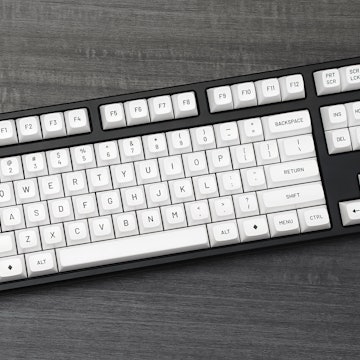Click to view our Accessibility Statement or contact us with accessibility-related questions


Showing 1 of 104 conversations about:

Cloaca
1906
Jun 24, 2017
bookmark_border
I've never heard of a Japanese person using kana input. Japanese is input using roman letters and then converted to Japanese with the "henkan" key. Back in the day senior citizens who had never used a computer and couldn't touch type might have used these. My Happy Hacking keyboard Pro JP (for Japanese) doesn't have kana on the keycaps, although oddly Apple still includes kana, probably because the stuff is "designed in California."

Tennon
1
Aug 8, 2017
bookmark_border
CloacaThat's very interesting. I'm learning Japanese and I think you just convinced me not to get this set.
Another downer of this is is that it doesn't have a ろ key (the keyboards that do have kana usually have an extra key next to right shift).
It does look really nice though...
It does look really nice though...

Cloaca
1906
Aug 9, 2017
bookmark_border
TennonOne clarification: although Japanese users of PC and Macintoshes 99 percent use romaji input (100 percent for anyone under 50 years old), for mobile phones and smartphones it's the oppoosite: almost everyone uses kana input.
Kana input on a phone is nice because you can use a 12-key (push-button telephone style) input pad, which gives you nice, big buttons to use. This gives you 10 keys (key images on the touch screen) for the rows of the kana syllabary (a, ka, sa, ta, etc.), and a couple of buttons for specialized stuff like dakuon and han-dakuon conversion.
Each key holds five possible characters, the character on the key, and four more in the four "flicking" directions, up, down, left, and right. So you either tap the key or flick starting from the key in one of the four directions. You get a whole kana row on one key, e.g., ka ki ku ke ko. The ka key produces a ka when tapped, and a ki when flicked left. A chi is the ta key flicked left. This is really fast, and can be done one handed while holding onto a subway strap with the other hand, which is how most urban Japanese spend a couple of hours of their lives every weekday.
Kana input on a phone is nice because you can use a 12-key (push-button telephone style) input pad, which gives you nice, big buttons to use. This gives you 10 keys (key images on the touch screen) for the rows of the kana syllabary (a, ka, sa, ta, etc.), and a couple of buttons for specialized stuff like dakuon and han-dakuon conversion.
Each key holds five possible characters, the character on the key, and four more in the four "flicking" directions, up, down, left, and right. So you either tap the key or flick starting from the key in one of the four directions. You get a whole kana row on one key, e.g., ka ki ku ke ko. The ka key produces a ka when tapped, and a ki when flicked left. A chi is the ta key flicked left. This is really fast, and can be done one handed while holding onto a subway strap with the other hand, which is how most urban Japanese spend a couple of hours of their lives every weekday.
















